Another year has passed, and we hope everyone reading this had a great start to the new year and the current year. ARK turned 101 years old in the past year and is still going strong. As we’re just at the beginning of 2025, not much interesting has happened in terms of radio-related events for us. Instead, we thought it would be interesting to have a look at the past year through the lens of our club. This post (in post) turned out to be much longer than what we first anticipated, so it had to be split in twain. Part one will focus on activities around the club itself, and part 2 will focus more on the QSOs of the past year.
Recruits
Chronologically, the year starts with the spring semester and ends with the fall semester. Conveniently, both of these start with the recruitment of new members, so maybe it’s a good fit to begin with here. At the beginning of the year, there was a huge number of applicants, and the board could proudly announce a total of 17 new recruits! As there is nothing stopping ARK from recruiting more people outside of the recruitment period, six more members were accepted later as well. During the fall semester, we still had many wonderful applicants, but this time, we had to limit the amount to 16, which brings the yearly total to 39. We hope everyone feels welcome in our club and will enjoy radio for years to come!

Photo: LB9JJ
Spring Cabin Trip
An ARK tradition since 2020 is to make a spring radio cabin trip to welcome our new members. This year, we went to Oppdal, where we stayed at “Omegahytten.” The weather forecast offered lots of rain, snow, wind, and heavy avalanche warnings. Despite considering postponing it, we all ended up at the cabin Friday evening for tacos, followed by card games and board games. We also set time aside for an indoor exercise in tuning vertical antennas, which is fun for both new and old members!

Photo: LB9JJ
On Saturday, we woke up to fresh snow and sun, ready for a day of radio outdoors. We split into two groups: one that set up a makeshift dipole by the cabin and one that ventured up the nearby ski slopes. Usually, we would have considered a SOTA trip, but the avalanche warnings were still in place. Both groups participated in the EU DX context, with a particular focus on letting new recruits try the radio. After a while, the wind increased, and the skiers went home to the others for dinner and another social evening.
The Sunday contained no planned activities, but we had to clean and move out of the cabin. In addition, a few of us went for a nice ski trip before going home to Trondheim.

Photo: LB9JJ
National Field Day
The main radio event of the year once again happened in early September. The QTH “Samatun” has served us well ever since 2019; maybe the footprints of our antennas can be spotted in the dirt for years to come by now. With a large number of recruits this fall, it wasn’t surprising that 25 Field Day-rookies joined this year, with 45 OPs in all (and two doggies). There weren’t even enough beds inside the cabin, with the option to sleep outside becoming mandatory for several of the participants. We were at least lucky with the weather.
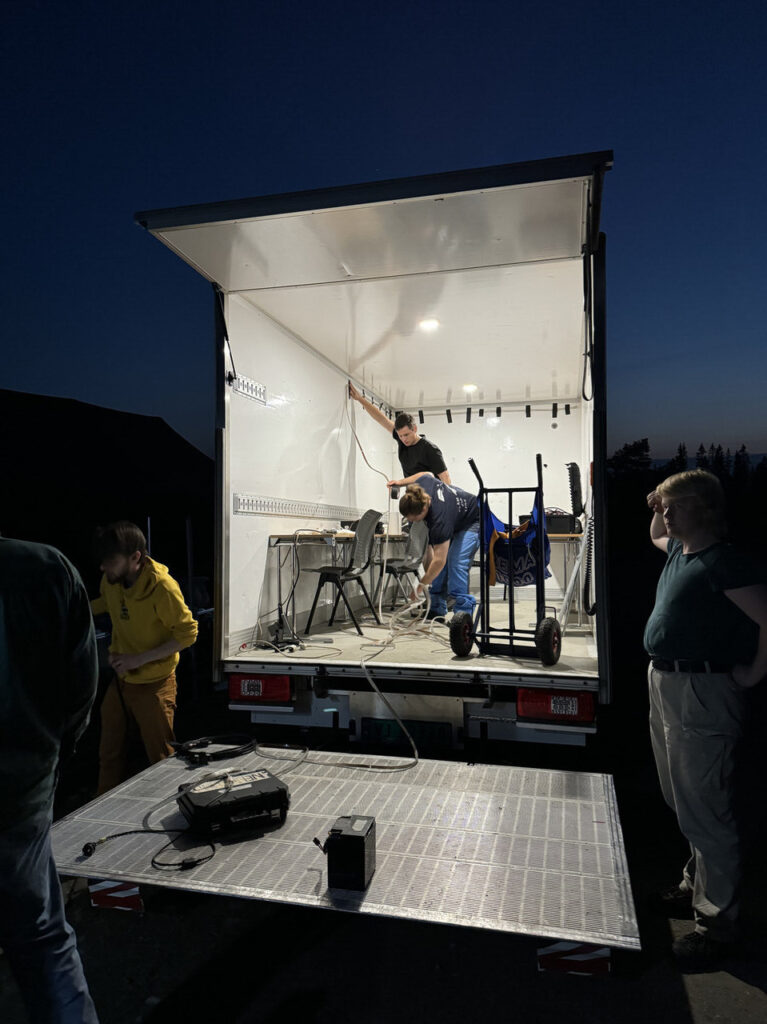
Photo: LB9JJ
With antennas steadily getting up and functional, there were a few knockbacks, however. A few of the amplifiers brought along suddenly had a few technical issues, which put the shack on an hour delay behind the contest start. LA1K has been a steady 2nd place achiever the last couple of years, behind only LA1QRO, but this year, we unfortunately got 4th place, behind NRRL groups Oslo LA4O and Trondheim LA2T. ARK affiliate LA1AFP was securely defeated, though, and ended up solidly in 6th place (with author LB5PI representing).
Photo: Eskil M.
However, with the final results months away from ruining anyone’s mood, everyone seemed to have a great time, and Field Day did what it usually does: introduce the newest members to our club and radio. Some of the YLs got very confident in their operating skills after Field Day as well (one of which got 312 of the total 866 QSOs!) and went ahead and purchased the license “LA1YLS”. It will premier at the YL-OM Contest in February, so stay on the lookout for the Young Ladies next month.
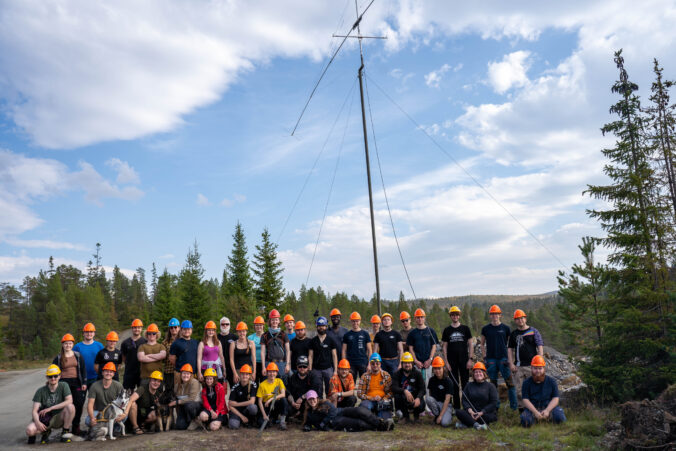
Photo: LB0WJ
Contests
One of our favorite parts of the amateur radio hobby is radio-sport. In 2024, we participated in a total of 27 contests, mostly from our home QTH at Samfundet. We participated in two serious 48-hour events where we had an operator on the radio for the whole contest duration, CQ WPX RTTY and CQ WW RTTY. This was a great success, with over 2.000 QSOs in CQ WPX (a new ARK record) and over 2.000 claimed QSOs in CQ WW RTTY. Usually, we would also have joined the equivalent SSB contests, but CQ WPX SSB ended on the easter break, and the most eager of us joined CQ WW SSB and participated under the LN8W callsign.
Photo: LB2RH
In most other contests, we opted for a more casual approach of just operating the convenient hours of the day, after sleeping in – but before alcohol gets involved.
LN8W Contest Station
For the large international contests, LN8W has built up a competitive station way down south, just outside of Oslo. As ARKs QTH isn’t the most optimal for reaching the top of the leaderboards anymore, invites from LN8W have led to a few trips down recently, which you can read about here. Usually, CQ WW SSB is a very popular contest, with the slots at the contest station already booked well in advance, but this year was the exception to the rule. With slots open and four additional operators joining from LA1K, the manned hours became less for everyone involved, which hopefully made up for some of our lack of experience!
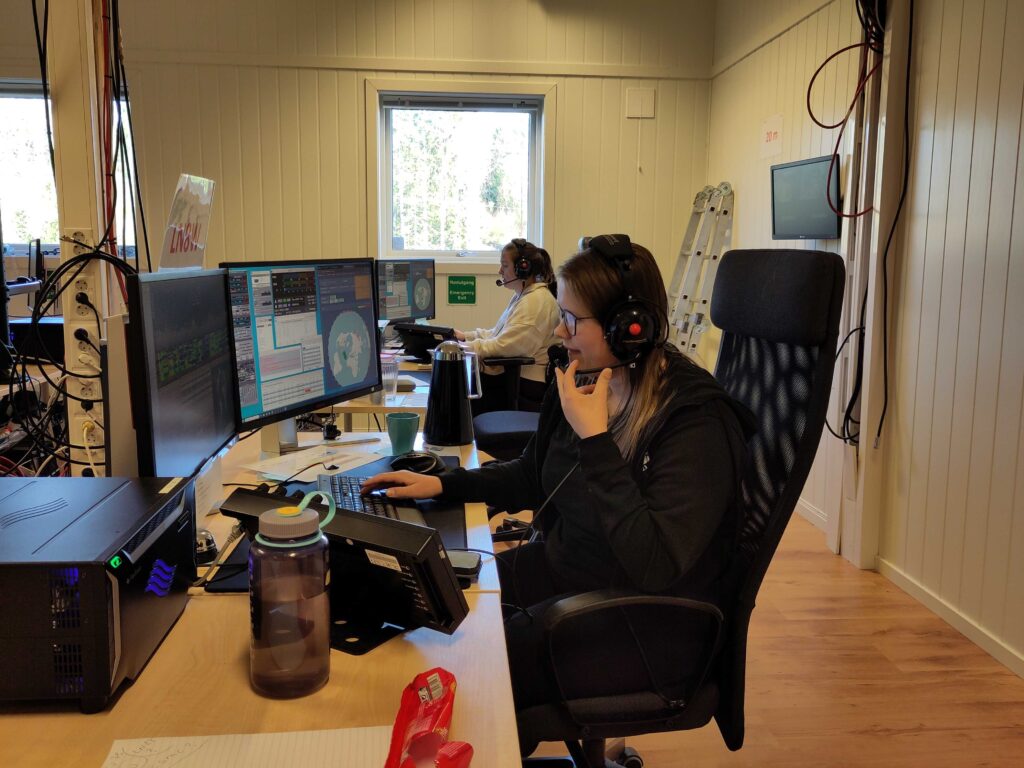
Front to back: LB9JJ and LB9WI
Photo: LB5DH
Even still, the most eager operators were assigned to the shack for 34 out of 48 hours with a max of 4 hours of sleep and up to 7 hours continuously. This seemed too intense for us, so we got, by request, a reduced operation schedule. The conditions were awesome, in particular the first 24 hours. In total, we claimed a total of 15.505.875 points, which will likely be a new Norwegian record for CQ WW SSB. We had a lot of fun at Rakkestad. Operating with antennas at that caliber gives another dimension to contesting, compared to omnidirectional antennas.
CW
2024 was also the first time in years for our club that many new CW operators were able to securely get a QSO in the log without needing any decoding software. Interests in CW and coursing have fluctuated a bit over the last couple of years, but this year, the skill had reached good enough levels to pull through. The first QSO in the daily log was completed in early February and steadily grew over the course of the year. LA1K was also to be heard on ARI DX, CQ WPX, CQ WW, and ARRL 10m, with a total number of 5 OPs in the log. The club’s LCWO group also had six new members join by the end of the year. We hope the trend will continue for years to come and that our club will have a rising amount of operators doing CW on the air.

Photo: LB5DH
New Licensees
As usual, LA1K arranged two license courses this year, once per semester. With radio trips and Field Day being wonderful ways to get people eager to get their own licenses, we had a bunch of people who signed up for the courses this year. The radio exams in recent years have gotten a lot tougher in terms of what you need to know, and several questions brought up from footnotes in the course book are straight-up ridiculous. However, some people persevered and passed the tough exam! We’ll once again congratulate LB0BJ, LB0CJ, LB0DJ, LB0EJ, and LB0FJ from the spring exam and LB2BK, LB2CK, and LB2DK from the fall!
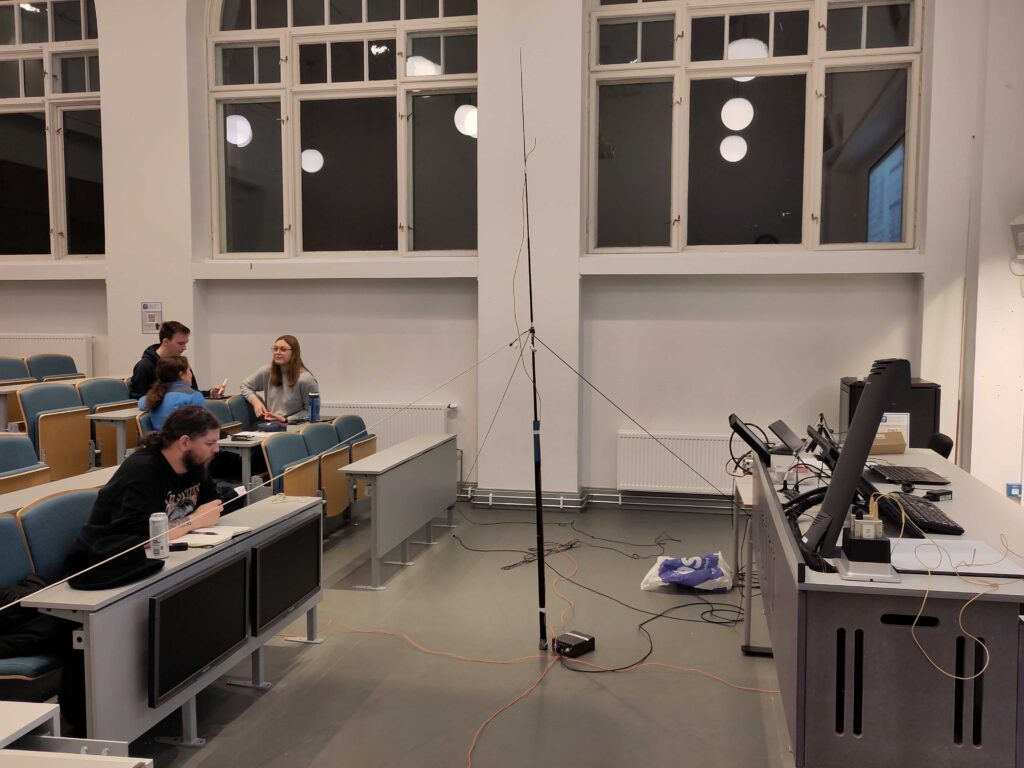
Photo: LB5DH
Summits on the Air
We’ve had a growing interest in SOTA the past few years, but 2024 set a new record in the number of activations. If we count all operators on all activations, we count a total of 70 on 27 unique summits. This may not be much compared to the top SOTA activators in Norway, but it’s not bad for casual SOTA activators like us.

Photo: LB5DH
In September, two of us went to the SOTA-gathering of SOTA Norway to meet some of the top SOTA activists. This weekend included several activations, many Summit-to-summit contacts, some completes, lots of fun, and a nice social opportunity to meet others with the same hobby.

Photo: LB0CJ
In particular, we did more SOTA-activations in the summer compared to the previous years. Our most popular activation was the 1. May trip to Storheia, where we were a total of 12 ARKers, including 5 with license.
Beacons
There’s been a work in progress since the fall of 2020 to restore the building where we keep our radio beacons at the top of Vassfjellet in Melhus. The project kicked off in the spring of 2021, but last year, the project really resembled something natural and not something out of a Picasso notebook. The restoration of the building is still a work in progress, even though most of the dirty work is out of the way. We hope to see the project being completed in the summer of 2025 and hope to see the four beacons on air again at the same time. The previous article on the site goes into more detail on this subject for those who are interested!

Photo: LB0VG
Backlog
We’ve now summarised a lot of the year, mainly what we were able to get done through most of it. As there’s still plenty to do, we thought it would be fitting to conclude with a few things that’s still a work in progress.
Apart from the antennas mentioned in this earlier post, the portable amps at Field Day are also in need of repairs due to FD 2025.
In our archives, there’s also a work in progress that’s steadily been worked on through 2024 (and several years in the works already), which is converting our paper logs to digital ADIF files. Apart from making searches way easier, it also provides interesting statistics and greatly improves our QSL service. And for those who are eagerly awaiting an LA100K QSL card, this is currently being designed and will hopefully be sent out during the spring of 2025!
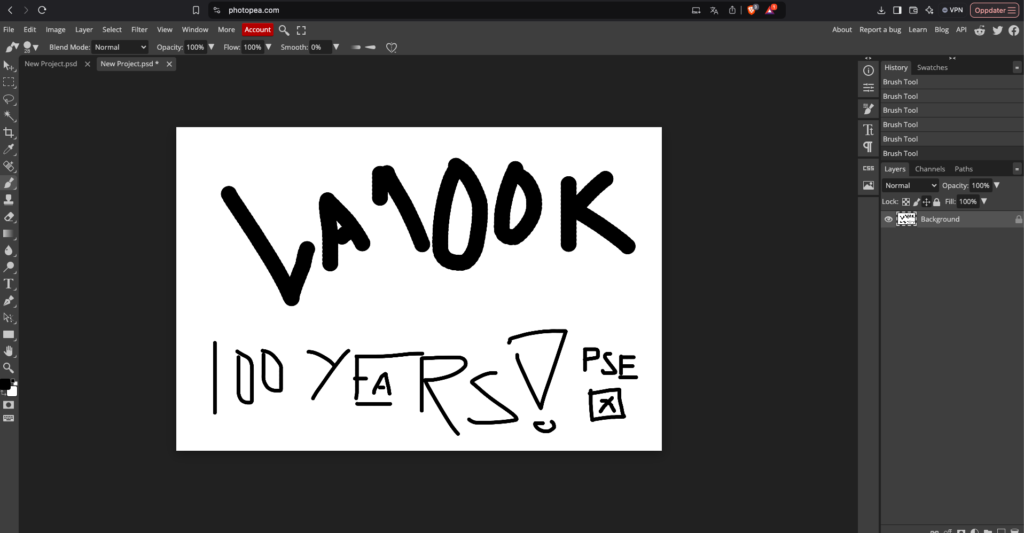
Photo: Top secret!
That’s it for part one of the 2024 recap; I hope you made it this far down! As previously mentioned, we’ll have a look at the QSO statistics for the past year in next week’s article. Hope you’ll find it as interesting as we do!
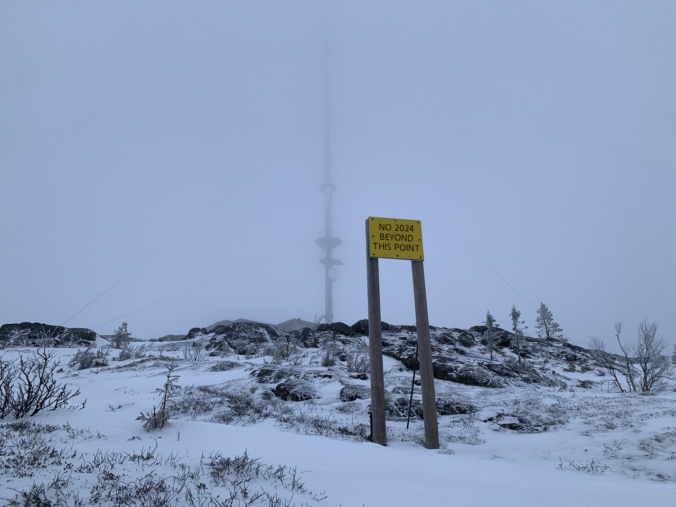

Leave a Reply